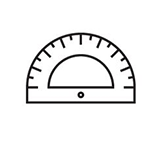메타세쿼이아화석(Metasequoia fossils cone)10062207 
| 국내/해외배송 | |
|---|---|
| 배송비 방법 | 택배 |
| 배송비 | 4,000원 (50,000원 이상 구매 시 무료) |
| 수량 |
|
| 상품 정보 | 가격 | 삭제 |
|---|---|---|
| [총 상품금액(수량)] 0 (0개) | ||
일반명 : 메타세쿼이아화석(Metasequoia fossils cone)
학명 : Metasequoia occidentalis
지질시대 : Early Middle Eocene (Pennsylvanian (320 million years ago)
지층 : Llewellyn Formation
원산지 : Tranquille Shale, Cache Creek, British Columbia, Canada
About Metasequoia occidentalis (Dawn Redwood): Division Pinophyta (conifers); Class Pinopsida; Order Pinales; Family Cupressaceae(겉씨식물 구과목 낙우송과의 낙엽침엽 교목)
These beautiful Metasequoia plant fossils come from the lacustrine deposits of the McAbee Flora of the Eocene of British Columbia, Canada. Note the fine preservational details. During the Eocene, the region was dominated by a shallow lake. Plant matter which fell into the water was covered with a fine layer of silt which built up over the years as a result of deposition of diatoms which bloomed in the lake each spring and died in the summer. The Dawn Redwood (Metasequoia) is a genus that was first discovered in Korea over 60 years ago. The first living specimens were discovered in central China in 1944; Dawn Redwood is considered a living fossil. The flora of the region during the Eocene was dominated by conifers farther away from the lake, and elm, birch, beech, and alder near to the lakeshore.
Metasequoia fossils are known from many areas in the Northern Hemisphere; over 20 fossil species have been named, but are now treated in just three species, M. foxii, M. milleri, and M. occidentalis (Farjon 2005). During the Paleocene-Eocene Thermal Maximum, extensive forests of Metasequoia occurred as far north as Axel Heiberg Island (northern Canada) at around 80°N latitude. Large petrified trunks and stumps of the extinct Metasequoia occidentalis also make up the major portion of Tertiary fossil plant material in the badlands of western North Dakota in the United States.



















 확대보기 및 상세정보
확대보기 및 상세정보